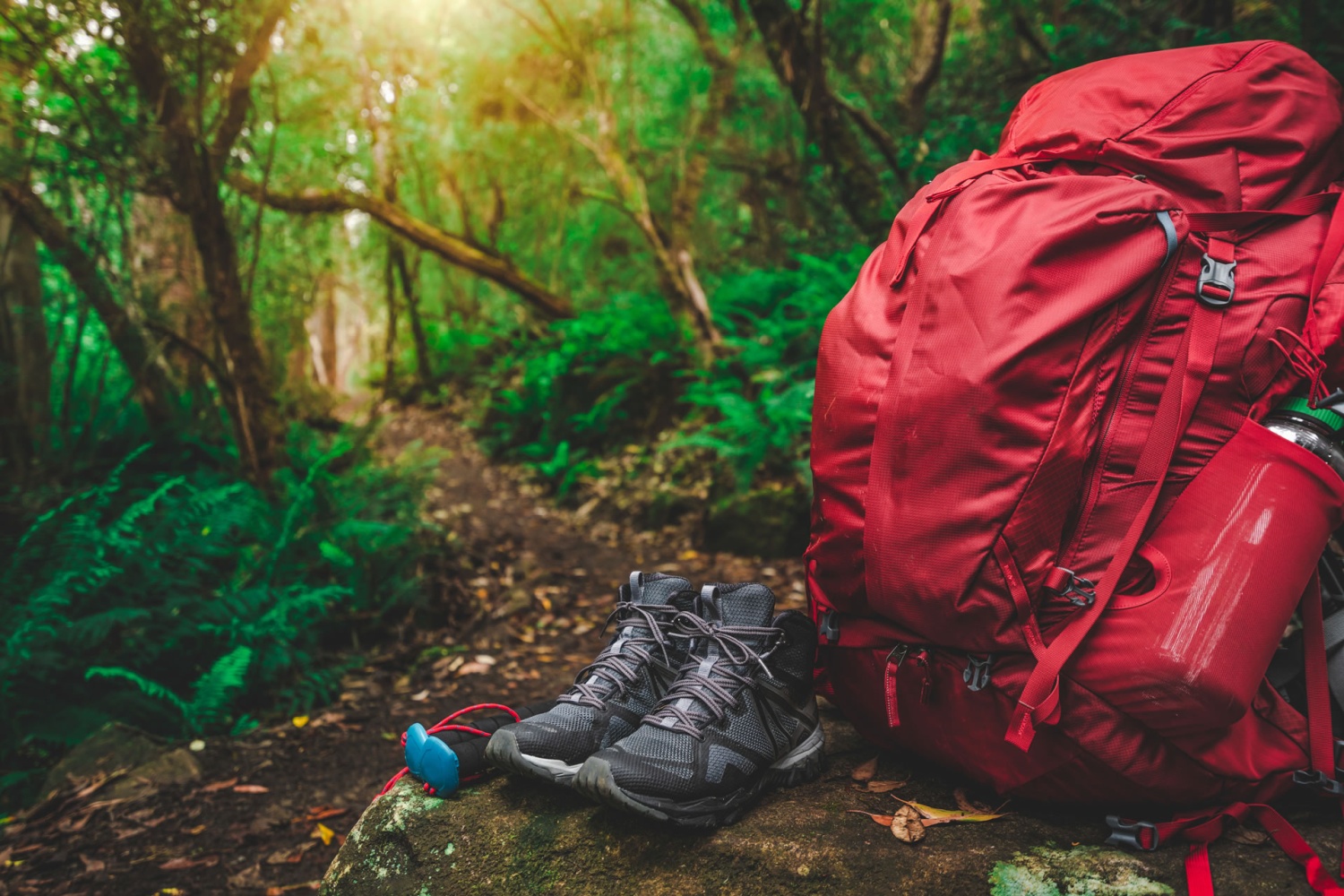Hiking expeditions provide the opportunity to take in beautiful scenery, new trails for exploring, and enjoy intense cardio exercise as well. If you’re planning some multi-day hikes in Australia’s most breathtaking camping spots, you’ll want to know how to prepare for some overnight stays in the bush.
But what should you be adding to your pack? Before setting out on your hiking expedition, it’s always a good rule of thumb to spend time planning the list of gear and supplies you can expect to carry along with you. It’s a delicate balance of preparation and practicality that ensures a safe and enjoyable journey.
Continue reading for our suggestions on how you can pack practically for your next overnight hiking trip.
Secure Your Essential Hiking Gear
The first thing you’ll want to do is find out where to secure all your hiking essentials, from the essentials like a waterproof canvas for your tent, to the items that elevate the experience, such as an outdoor trail camera to capture all the animals that brush by in the night.
Begin with a well-built backpack with adequate space to carry your hiking payload. Use the duration of your hike to determine your pack’s size. 20 to 30 litres are suitable for overnight walks, while 50 to 65 litres do well for multi-day trips. To minimise fatigue, select a backpack with reinforced shoulder straps, hip belts, and back panels for efficient weight distribution. Good ventilation and padding are essential for a comfortable outing, especially in warm climates like Australia.

Put Your Best Foot Forward
And then there’s footwear! You’ll want to choose durable hiking boots that provide firm ankle support. Thick outer skin materials and inner padding protect your calves and feet from abrasions. For beginner trails, opting for lighter, more flexible hiking shoes should suffice without sacrificing support or traction. Whatever the hike’s length, factor in the anticipated weather conditions when selecting footwear and other clothing, paying particular attention to waterproofing.
Additionally, hiking poles are often game-changers, which many people overlook. They help maintain your balance on uneven and rough terrain and in shallow water like brooks or streams. By using hiking poles, you can reduce knee and ankle joint strain, and they provide support during up and downhill trail sections, allowing you to conserve energy.
First Aid and Safety
When hiking, your main defence against mishaps and minor injuries is a well-stocked first aid kit. Be sure to include the basics like bandages, gauze pads, and medical tape to hold them tightly in place. Before covering scratches and cuts, prevent infection with a pack of antiseptic wipes. Broad pressure bandages for snake bites are a must-have in Australia, however rare your chances of being bitten.
Don’t forget prescription medications, and blister ointments wouldn’t be a bad idea either. Handy first-aid tools include small scissors and knives, plus tweezers for removing splinters or ticks.
If the hike is through a remote area, bring an emergency whistle to draw attention to you and your party in case you get lost or become in distress, along with extra charging devices for your phones.
Shelter & Weather Protection
The weather in Australia can change on a coin flip. Be ready for storms by packing lightweight, packable jackets offering breathability and full waterproof covering. Ponchos and waterproof pants complete the ensemble if you’re facing heavy downpours. It’s also well worth bringing some sturdy sheltering like tarps or portable shades – especially if you’re planning to do any coastal hiking.
And speaking of being exposed to the elements, whether by the coast or during a mountain climb, our expensive electronic devices need protection too. So be sure to bring dry bags or covers to protect them from excessive sun, wind, or moisture exposure.
You also want to make sure you’re packing for your extremities as well. So alongside packing a good raincoat and adventure pants, be sure to bring some gloves, and extra pairs of socks and underwear just in case you get soaked. If the weather clears, lay the wet clothes out in direct sunlight or hang them to drip dry; there’s nothing worse than being damp and cold.
Protection From The Elements
Shielding yourself from excessive sunlight is crucial to avoid painful and skin-damaging exposure burns, a risk in all seasons due to the high-intensity UV here in Aus. Start with a wide-brim hat made from breathable material, offering broad coverage for your forehead, face, ears, and neck.
Complete your headgear with a quality set of UV-blocking sunglasses, and look for a wrap-around style for complete coverage, and polarising lenses for protection against irritating glare. Use a high-SPF sunscreen lotion that is both waterproof and sweat-resistant.
To protect against insect bites, bring along a quality repellent for mosquitoes, ticks, and other pests. Look for repellents containing DEET, picaridin, or natural alternatives. For areas with standing water or thick, damp grass, insects will be heavy; minimise skin exposure by wearing long sleeves and pants. Consider wearing a bug net around your head and face in areas with excessive infestation, especially in springtime and early summer.
Hydration And Snacks
Stay hydrated and carry plenty of water if you plan an extensive hike. Use durable water bottles, thermoses, or, if you prefer a hands-free operation, take a hydration pack.
For nutritious snacks, pack high-calorie items such as energy bars, dried fruit, and nuts. These are all lightweight and boost your energy in no time. For extended hikes, though they are a bit heavier, pre-packaged dehydrated meals are a solid option. To fuel your hikes effectively, aim to balance the proteins, carbs, and fats in your meals, and start and end your day with a generous meal.
Navigation
For complex or unfamiliar hikes, navigational aids are a brilliant idea to stay safe and keep yourself and your party on course. Trail maps, if available, are a lightweight, low-tech option.
If you have smartphone service in the hike area, pre-plan by pinning the route on your chosen app before heading out. A standalone GPS device, fully charged, is a great backup tool, just in case. For small to medium groups, two-way radios are beneficial if your group splits off and gets separated.
Hike Smart And Safe
Advanced preparation goes a long way to ensure a safe and fun overnight hike. Using these practical tips, we’re confident your next excursion will be a joy. Remember to respect the environment, clean up trash, and preserve Mother Nature’s beauty for everyone. Tell someone where you’re going and when you expect to be back, so friends and family aren’t worried when they can’t reach you, and you’re out peacefully snoozing under the stars!
Posted By JenniferA
Updated : 17th April 2024 | Words : 1107 | Views : 174





